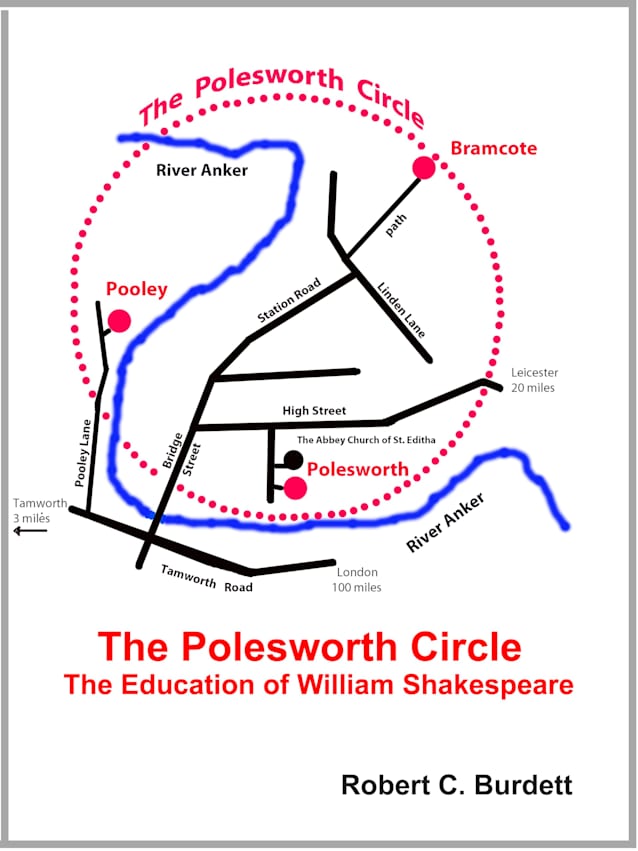The Polesworth Circle: The Education of William Shakespeare
About
Building upon a thesis proposed by Arthur Gray, Master of Jesus College, Cambridge, this book contains a history play which dramatizes how Henry Goodyer, Thomas Burdett, and Raphael Holinshed, via a literary salon called the “Polesworth Circle,” educated, trained, and supported two of England’s most notable poets and playwrights, Michael Drayton and William Shakespeare. The book begins with an introduction (the six premises of the play) and an overview (abstract, cast, setting, time).
The play, which consists of nine scenes, begins with a prologue - a brief history of England and Polesworth.
The first scene features a poem and two birds, a falcon named Fawcon and a magpie named Pye. Via the poem, written by another Robert Burdett (ca 1542 AD), the falcon defends womanhood against the malicious attacks being made by the magpie.
The second scene features the poetry of Michael Drayton, as he walks along the River Anker with William Shakespeare and Anne Goodyer (the love of Michael’s life).
The third scene introduces the “internship” program that the Polesworth Circle has established to educate Michael and William in the art of storytelling, under the tutelage of Burdett’s steward, a man named Raphael Holinshed.
The fourth scene, somewhat musical in nature, introduces Holinshed, the great chronicler of England, Scotland, and Wales. At the end of the scene Raphael gives “his boys” their first assignment – for each of them to write a play about one of four dead Burdets; or a man named Thomas Arden of Faversham (who had been murdered by his wife).
The fifth scene describes Holinshed’s “Top Ten” storytelling hints.
The sixth scene features the play written by Michael Drayton entitled “The Murder of Thomas Cokayne.”
The seventh scene features the play written by William Shakespeare entitled “The Beheading of Thomas Burdet” (a forerunner to King Richard III).
The eighth scene describes the death-bed bequests of Holinshed.
The last scene, after Holinshed’s wake, features an appearance by Sister/Saint Editha (an apparition).
The Epilogue updates the audience on the post-play lives of each of the plays’ characters.
